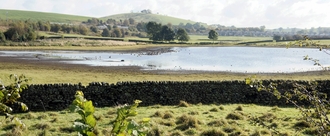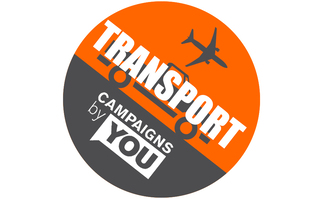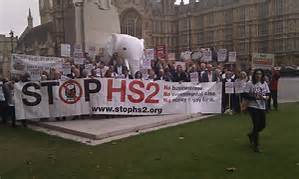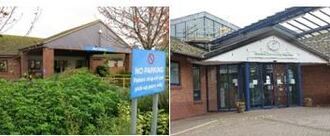-
Save our "Waid Academy"!It has been decided without consulting local people, to rename our Academy, "The Waid", when a new building opens next year. Local people are outraged. A former Deputy Rector, now aged 96, who help to educate three generations of students is deeply saddened. Whilst the future is important, we should always learn from the past. The Waid Academy has set and produced the highest standards of education. It has served the East Neuk for 130 years. It opened on 6th December1886 and was financed using a bequest left by Lt Andrew RN. It's purpose was to to provide secondary education for the East Neuk of Fife. Most of the people who still live in the area, plus other who left for pastures new were students there and received a top class education. "The Waid Academy" is their's, In these uncertain times,we all need something to cherish, our "Academy", fits the bill perfectly.4 of 100 SignaturesCreated by Bill Ledger
-
Scrap the Staffordshire Tipping TaxThe County Council has a legal duty to provide waste disposal free of charge for waste created in the household and through this delegated decision the Conservative leadership is ignoring its legal responsibility to the communities of Staffordshire. The Council should use its discretion to charge directed to business traders and identify these specifically to charge for waste generated from their commercial activities. These new charges have been hidden in County Council paperwork from two years ago and did not receive any meaningful public scrutiny. Further the Council took felt sufficiently concerned about their legal position that they obtained specific advice and concluded that “consultation….is not necessary.” The County Council has a duty to consider the impact of any decisions a cabinet member takes and of particular note is that they acknowledge that the charges will have a detrimental effect on the most vulnerable in our community stating clearly the “…greatest impact on low income households.” They have pressed ahead regardless with this discriminatory practice. Secondly, the Council acknowledge that there could be “a small increase” in fly-tipping. We think they have underestimated the increase in fly-tipping which is costly to clean up for the District Council. The Council think that people won’t be tempted to put soil, hardcore and plasterboard in their own bins. We think residents are likely to try and avoid these charges and this will mean less recycling. The Council do not care that they anticipate “some complaints” in the short term because they believe the issue will blow over and we, the residents of Staffordshire, will continue to accept their ill-considered and flawed decision making to the detriment of communities. All quotes from http://moderngov.staffordshire.gov.uk/documents/s87805/Review%20of%20Household%20Waste%20Recycling%20Centre%20non-household%20waste.pdf1,581 of 2,000 SignaturesCreated by Paul Woodhead
-
Ask the Mayor to support a UK HIV/AIDS Memorial in LondonWe the undersigned call on the Mayor of London to support us in the creation of a UK HIV/AIDS Memorial. HIV/AIDS disproportionally affected gay men but also new African communities; people with haemophilia; prisoners and injecting drug users. It influenced the whole nation by forcing us to confront deep rooted prejudices and ask questions about equality, difference, religion, morality and identity which hit at the very core of our values as a people and as a nation. There is currently no memorial to those who died in London in contrast to most other major cities affected including Amsterdam, Auckland, Barcelona, Berlin, Brighton, Buenos Aires, Cape Town, Dublin, Edinburgh, Hong Kong, Johannesburg, Kiev, LA, Madrid, Manchester, Melbourne, Montreal, Moscow, Munich, NYC, Paris, San Francisco, San Salvador, Sydney, Toronto, Vienna and Zurich. We want the Mayor of London to support our campaign for a national memorial in the city, by meeting with campaigners and helping in practical ways to find a location, funding and wider support. Why Now? 1) 2017 is the 50th Anniversary of the passing of the Sexual Offences Act 1967 which partly decriminalised sexual acts between two men in private and aged over 21. 2) 2016 is the 20th anniversary since the widespread use of the life-saving anti-retroviral therapy that arrested the number of deaths and literally, allowed for a new awakening. 3) New communities are examining and documenting their unique histories for future generations to make more sense of their own lives and to make secure as well as more grounded, their identities and narratives. The National AIDS Memorial in London aims: • To pay tribute to the men, women and children who died in the UK • To remember the struggles of those living with HIV as well as those who took on the challenge to treat, support and campaign for those who were affected by AIDS. • To acknowledge an almost forgotten period in British history • To form a linear historical path between the past, the present and the future for all the communities in the UK who bore the brunt of the epidemic. • To remember those worldwide who perished and who continue to live with HIV, the majority of whom still cannot access treatment This campaign is being led by GMFA (Gay Men Fighting AIDS), in conjunction with the UK HIV sector. @AidsMemoryUK; #AidsMemoryUK3,524 of 4,000 SignaturesCreated by Ash Kotak
-
Stop the Desecration of North Yorkshire's Hellifield FlashesThe Hellifield Flashes are a series of large natural ponds in an an area of unspoiled open grazing, just a mile or so distant from the Yorkshire Dales National Park and seperating the villages of Hellifield and Long Preston. For centuries the Flashes have been a place of rural tranquility where sheep may safely graze and people can wander, picnic, and enjoy the beauty and tranquility of the countryside. The Flashes are also famed for their bird life providing, at certain times of the year, sanctuary for at least 4,000 migratory birds.1,467 of 2,000 SignaturesCreated by Peter Scott-Smith
-
OPPOSE THE 1 HOUR PARKING RESTRICTIONS IN TICKHILLWe feel the proposed restrictions are a threat to local 'non convenience' businesses who offer leisure activities with a longer stay time than the one hour proposed limit. Our local salons, coffee shops, restaurants, clothes shops, bars and other shopping outlets fear, that the restricted parking would deter visitors from spending time using a number of facilities in the village; causing the local economy to suffer as a result. We do feel that the parking congestion in the village needs to be addressed, but do not feel that this is the answer. Please support us in our campaign to put a stop to the proposed restrictions BEFORE THE COUNCIL MEETING ON TUESDAY 8 NOVEMBER 2016, and keep Tickhill the eclectic place that visitors love to spend time in.437 of 500 SignaturesCreated by Lindsey Jones
-
Mobile phones in cars and trucksThis important because lives of other road users are in danger, and people get killed, and the driver has shown complete disregard for his responsibility and care of his vehicle. If you are not concentrating on your task of driving, accidents are caused, they don't just happen. Texting and scrolling and watching videos is very very dangerous7 of 100 SignaturesCreated by Janie Estcourt
-
Introduce Mental Health education to the curriculumIt is important to empower young people who are at risk of developing mental health problems by providing knowledge, support, advice and guidance for them to seek help from the right services. It is important to remove inequality of opportunity and seek to enable sufferers to participate fully in society without fear of rejection.1,525 of 2,000 SignaturesCreated by Social Mind

-
Visit visas for family members of British citizensWe miss our family! Our children miss their grandparents! And we're not the only ones... My family and I are British citizens but my husband originates from a non-EU country where his immediate family (mum, dad and sister) still live. We have two young children and would like for them to see their grandparents at least once a year as we are a close family unit. As non-EU and non-Commonwealth citizens they need to apply for a visa to come to the UK - not to live, but to visit us for a short holiday. This is something that many people from diverse countries have to do each time they want to see their family in the UK. The problem is that our visa application system is complex and expensive to use and authorisation or denial of a visa seems often to be an arbitrary decision, based on tenuous facts. If a visa is not granted the fee is non-refundable, the paperwork is not returned to the applicant and there is no right of appeal. Visas are being denied left, right and centre to immediate family members of British citizens and families are being left to suffer, far from each other. In fact British citizens are being penalised more than their European counterparts, as a European resident living in Britain can bring their extended families over for a visit, any time they like. We are not saying this shouldn't happen, but that British nationals should also be allowed to bring their families over for a visit, without recourse to punishing visa systems that deny even immediate family members entry to the UK, even for a short stay, even when being hosted by their own family and even when they demonstrate strong finances to support themselves. These are people who cannot access benefits or work whilst here, who cannot access NHS services and who contribute to the economy through tourism - they pose no risk and should not form part of any "immigration statistics" for they are not immigrants, but visitors, or tourists. We feel it is unfair and an infringement of our human rights to be denied access to our family - my husbands mother and father - and we call on Amber Rudd to reconsider the strict visa laws in these cases, and allow immediate family members to secure a visit visa with ease and transparency, when they can demonstrate that they are being supported by a resident British national. As British citizens, taxpayers and passport holders, with children born here, with no criminal convictions we believe this is a basic right we should have, it should not be a privilege of a few lucky ones. Please help us to take this campaign further by signing our petition! Thank you.112 of 200 SignaturesCreated by Ellie McKinlay
-
automatic loss of driving license for those caught using mobile phoneto prevent more loss of life on our roads8 of 100 SignaturesCreated by Susan Martin
-
Stop all ivory trading, including antique ivoryThe sale of antique ivory, of which many pieces have been proved to be post 1945, only serves to feed the demand for ivory. More African elephants are being killed by poachers today, than are being born. If this is not stopped, extinction will occur in 20 years The British Government musy stand by the CITES decision : "To close down any legal domestic market for ivory that is contributing to poaching or illegal trade."57 of 100 SignaturesCreated by Anita Lewis
-
Cancel HS2 NOW & use money for NHS & Essential Services.Our NHS is being starved of funding which in turn put pressure on NHS to close A&E plus Maternity Services in Small to Medium Towns. Essential Services are also being starved of cash so Fire Brigades, Mental Health, Police Ambulance service Social Services and the list goes on. HS2 in EVERY Poll since 2010 has shown the majority of the UK does NOT WANT HS2. This is backed up by virtually ALL Academic Organisations, Government Committees as well as those people it is supposed to serve who say loudly they do not want HS2 as it is a waste of money and there is no need. The Government has NOT shown the true facts of HS2 for it knows that if it does then HS2 will be seen for the Vanity Project that it is with no valid reason to be built. Lets use what scant resources we have on things that will help the whole of the UK not just the rich.102 of 200 SignaturesCreated by Peter Deeley
-
Save Community Hospital Beds in East DevonDevon CCG is recommending the loss of 71 out of 143 community beds in eastern Devon. This follows 25 bed losses last year, including Axminster, Ottery St Mary, Crediton and Budleigh Salterton. Devon's 'Your Future Care' consultation is flawed. We do not believe that community beds should be closed at all. • East Devon has an above average population of elderly people • Many people in community hospital beds cannot be cared for at home because they are too unwell, even with enhanced care, or they have dementia or require end of life care • A 2015 audit identified over 600 people being cared for in a hospital bed who did not need to be there, but who lacked home support to enable them to return home • These patients will mostly be elderly and frail with complex needs, taking longer to recuperate from illness, operations and acute hospitals. It is a disaster in the making and is a money saving exercise at the expense of the patients’ health outcome. • Acute hospitals are increasingly unable to discharge patients because of the lack of available community services. Community services are already overstretched with an acute lack of appropriate carers for people in their own homes and difficulties with recruitment. There is no evidence that shifting from bed-based to community care works in a rural area like East Devon with a high incidence of elderly people with complex needs. These models of care need to be agreed and will take time to test and establish. The CCG will tell you that the new model of care with patients using their own beds has worked well in North Devon after removal of beds in Torrington, Ilfracombe and Bideford. IT DOES NOT AND EVIDENCE TO THIS EFFECT IS BEING IGNORED. Chronic underfunding by government of health and social care in Devon has led to the crisis we face today. Only the government can change this. In the past five years, council budgets for social care have fallen behind demand by £5 billion nationally, and 150,000 fewer people receive at-home help than five years ago. We must challenge the validity of this process: Honiton and Okehampton Community Hospital beds will be closed without consultation; a 'status quo' option must be considered; full financial and assessment information should be shared. The public need a full, transparent and meaningful consultation, rather than the CCG paying lip service to the process under government pressure. These proposed cuts to community hospital beds is the first stage in a relentless sequence of service reductions which will be outlined in the Sustainability and Transformation Plan to be published in November. Information released under the Freedom of Information Act indicates that the Success Regime in NEW Devon received £1.4m in 2015-16, and a further £6m in 2016-17. This £7.4m has been spent on management consultants and legal advice. Potential front line funding is being wasted on these re-organisations This massive change needs transparency; whole system changes and, above all, investment from central government. Closing more community hospital beds with no proven plan for care in place is high risk. The proposals as they stand, without adequate funding for alternative care, may save money, but they will not improve patient care and may compromise patient safety.1,215 of 2,000 SignaturesCreated by Chris East
Hello! We use cookies to improve your experience by providing insights into how the site is being used. Find out more.












